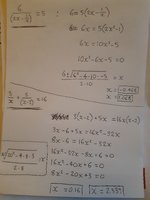Hi guys,
Looking for a bit of clarification on a couple questions I have done.
After doing these questions. My teacher started talking about alternative methods, so now I'm questioning what what I've done. He made it sound like he's after a single value.
Input on answers/method would be great. Sorry it's a bit messy
Many thanks

Looking for a bit of clarification on a couple questions I have done.
After doing these questions. My teacher started talking about alternative methods, so now I'm questioning what what I've done. He made it sound like he's after a single value.
Input on answers/method would be great. Sorry it's a bit messy
Many thanks

Last edited:
